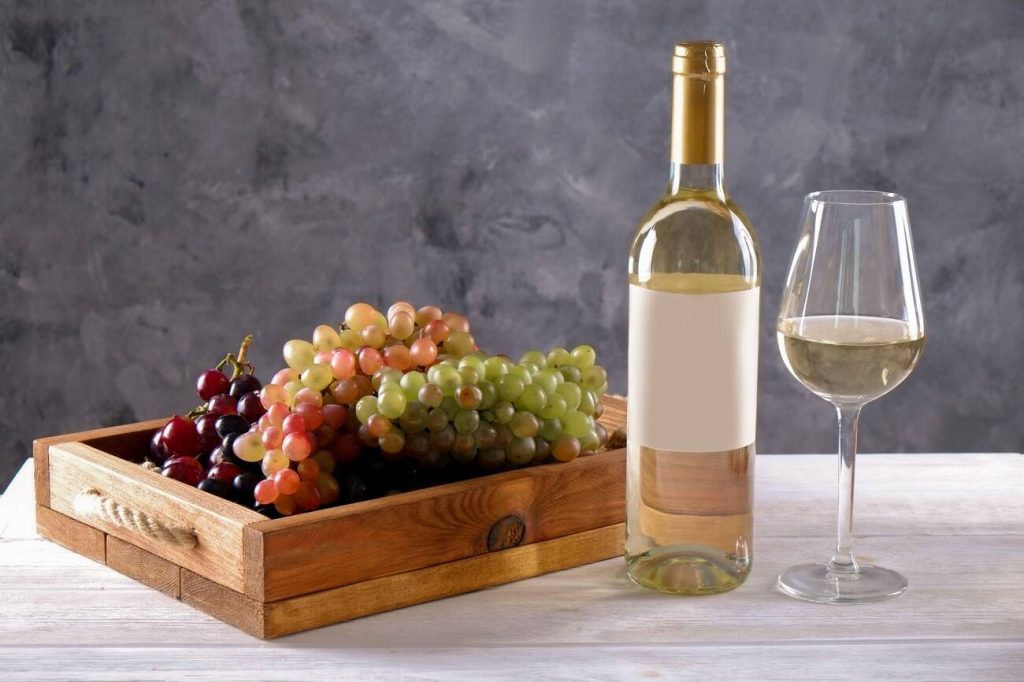Do you ever find yourself standing in front of a wine aisle, staring at the labels and feeling completely overwhelmed? Well, fear not! In this article, we will take a deep dive into the fascinating world of naming fruit wines. By understanding the labels and characteristics of different grape varieties, you’ll be able to confidently choose the perfect bottle for any occasion. So grab a glass, sit back, and let’s uncover the secrets behind each unique label. Cheers!
Contents
- The Art of Naming Fruit Wines
- The Role of Fruit Varieties in Wine Naming
- Exploring the Influence of Terroir on Fruit Wine Labels
- Unveiling the Stories Behind Fruit Wine Labels
- The Impact of Branding on Fruit Wine Naming
- From Orchard to Bottle: Tracing the Journey of Fruit Wine Labels
- The Science Behind Naming Fruit Wines
- Cultural Significance in Fruit Wine Naming
- The Evolution of Fruit Wine Labels: Past and Present
- Decoding the Symbolism in Fruit Wine Names
The Art of Naming Fruit Wines
When naming fruit wines, you can get creative and come up with unique labels that reflect the flavors and characteristics of the fruits used. Each fruit wine has its own distinct flavor profile, and the name should capture that essence. Whether it’s a tangy raspberry wine or a sweet peach wine, the name should evoke images of the fruit itself. Think about how the wine tastes on your palate and what emotions it brings forth. The art of naming fruit wines lies in finding the perfect balance between creativity and accuracy. You want to entice customers with an intriguing name while also giving them a clear idea of what they can expect from the wine. So go ahead, embrace your creativity and give those different fruit wines their deserving unique label!
The Role of Fruit Varieties in Wine Naming
Understanding the role of different fruit varieties in wine can help you make informed choices about the flavors and characteristics you prefer. When it comes to fruit wines, the type of fruit used plays a significant role in determining the taste and aroma profile. Here is a table showcasing some popular fruit varieties used in winemaking:
| Fruit | Flavor Profile | Common Characteristics |
|---|---|---|
| Apples | Crisp, Refreshing | Light-bodied |
| Berries | Sweet, Tart | Vibrant |
| Cherries | Juicy, Fruity | Medium-bodied |
| Peaches | Ripe, Fragrant | Rich |
Whether you’re looking for fruity wines or exploring cheap fruit wines for sale, understanding the different fruits used in winemaking can guide you towards finding your preferred taste. So next time you’re browsing through wine options, take a moment to consider the fruit that goes into making each bottle.
Exploring the Influence of Terroir on Fruit Wine Labels
Take a moment to consider how the influence of terroir is reflected on the labels of different fruit wines. When you look at a fruit wine label, you may notice specific information that indicates where the grapes were grown and how they were cultivated. The concept of terroir refers to the unique combination of soil, climate, and geography that can affect the flavor profile of a wine. For example, a label might mention that the grapes used in a particular fruit wine come from a specific vineyard or region known for producing high-quality fruits. This information provides insight into how the terroir has influenced the characteristics and taste of the wine. By understanding these indications on labels, you can gain a deeper appreciation for the connection between terroir and fruit wines.
Unveiling the Stories Behind Fruit Wine Labels
As you explore fruit wine labels, you’ll discover captivating stories that reveal the origins and influences behind each distinct label. These stories can take you on a journey through vineyards nestled in picturesque landscapes, where the fruits are carefully cultivated and hand-picked at their peak ripeness. You’ll learn about the winemakers’ passion for creating unique flavors by blending different varieties of fruits and experimenting with fermentation techniques. Each label tells a story of craftsmanship, tradition, and innovation. From the sun-kissed orchards of California to the lush vineyards of France, every bottle holds a piece of history and culture. So next time you pick up a bottle of fruit wine, take a moment to appreciate the artistry behind its label, and let it transport you to the place where it all began.
The Impact of Branding on Fruit Wine Naming
When exploring fruit wine branding, you’ll notice how the name of a wine can significantly influence its perception and appeal. Here are four ways in which a wine’s name can create imagery in your mind:
1) Evoking Nature: Names like “Sunset Vineyard” or “Berry Bliss” transport you to picturesque vineyards and orchards, creating a sense of natural beauty and tranquility.
2) Capturing Flavors: Names such as “Tropical Burst” or “Zesty Citrus” instantly bring to mind the vibrant and refreshing taste sensations that await you when sipping these fruity wines.
3) Conveying Sophistication: The names “Elegant Elixir” or “Velvet Essence” suggest a refined and luxurious drinking experience, appealing to those seeking elegance and sophistication.
4) Sparking Adventure: Wine names like “Wanderlust Red” or “Tropical Escape” ignite your imagination, inviting you on a journey filled with excitement and exploration.
From Orchard to Bottle: Tracing the Journey of Fruit Wine Labels
Explore the fascinating journey of fruit wine labels, tracing their evolution from orchard to bottle and discovering the intricate details behind each distinct design. From the moment the fruit is harvested in lush orchards, to its transformation into delicious wine, every step is carefully considered when it comes to labeling. The label not only showcases the type of fruit used but also reflects the craftsmanship and passion that goes into producing each bottle. As you delve deeper into the world of fruit wine labels, you’ll uncover a myriad of artistic styles, vibrant colors, and clever branding techniques. Whether it’s a whimsical illustration or a minimalist design, each label tells a story and captures the essence of the unique flavors waiting to be enjoyed inside. So next time you pour yourself a glass of fruity goodness, take a moment to appreciate the artistry behind that simple piece of paper wrapped around your bottle.
The Science Behind Naming Fruit Wines
Now that you understand the journey of fruit wine labels, let’s explore the science behind naming these unique wines. Here are four key aspects to consider:
- Flavor Inspiration: Fruit wines get their names from the specific fruits they are made with, such as apple, peach, or raspberry. The name reflects the primary flavor profile of the wine and gives consumers an idea of what to expect.
- Descriptive Adjectives: To enhance the appeal and differentiate their products, winemakers often use descriptive adjectives in the names of fruit wines. Words like “juicy,” “refreshing,” or “tangy” create imagery and evoke a sensory experience before even tasting the wine.
- Fun and Playfulness: Some fruit wines have playful or whimsical names to add a lighthearted touch. These creative names can bring joy and intrigue to customers as they explore different options.
- Local Tie-ins: Many fruit wines are named after specific regions or local landmarks where the fruits are grown. This not only highlights the origin but also emphasizes a sense of terroir unique to that area.
Understanding how fruit wines are named adds another layer of appreciation when enjoying these delightful beverages. So next time you encounter a bottle with an intriguing name, take a moment to savor both its taste and its clever moniker!
Cultural Significance in Fruit Wine Naming
If you want to appreciate the cultural significance of fruit wine names, take a moment to learn about the stories and traditions behind each name. Fruit wine names often hold deep connections to their origins, capturing the essence of their heritage and regional identity. For example, wines like Riesling and Gewürztraminer pay homage to their German roots, while Sangiovese represents the heart and soul of Italian winemaking. These names are not arbitrary; they reflect centuries-old traditions and the unique characteristics of the grapes used in each wine. By understanding the stories behind these names, you gain a greater appreciation for the craftsmanship and artistry that goes into producing fruit wines. So next time you uncork a bottle with an intriguing name, raise your glass and toast to the rich cultural tapestry woven into every sip.
The Evolution of Fruit Wine Labels: Past and Present
Take a moment to appreciate how fruit wine labels have evolved over time, capturing the essence of their origins while reflecting the changing preferences of consumers like yourself.
- Vibrant Colors: Imagine a label adorned with rich hues of red, purple, and yellow, symbolizing the luscious fruits used to create the wine. These colors entice your senses and evoke images of ripe berries and juicy citrus.
- Artistic Designs: Visualize intricate illustrations or photographs that depict the fruit in all its glory, showcasing its natural beauty and enticing you to indulge in its flavors.
- Descriptive Language: Picture labels that use descriptive words like “zesty,” “refreshing,” or “velvety” to paint a picture of what awaits inside the bottle, allowing you to anticipate and savor each sip.
- Modern Simplicity: Envision sleek and minimalist labels that embody contemporary aesthetics, featuring clean lines, elegant typography, and subtle hints at the flavor profiles within.
As you peruse the aisles of your favorite wine shop, these evolving labels catch your eye and invite you on a journey through fruity delights.
Decoding the Symbolism in Fruit Wine Names
As you explore the world of fruit wine, you’ll discover a fascinating array of symbolism embedded within the names of each unique bottle. These names are carefully chosen to convey certain characteristics and evoke specific emotions. For example, a fruit wine named “Sunrise Bliss” may signify a refreshing and uplifting experience, while “Midnight Serenade” might suggest a deeper and more indulgent flavor profile. The use of descriptive words like “tropical,” “juicy,” or “exotic” can transport you to distant lands with just one sip. Additionally, some fruit wines incorporate cultural references or historical nods in their names, adding another layer of intrigue and storytelling to your drinking experience. So next time you pick up a bottle of fruit wine, take a moment to appreciate the thoughtfulness behind its name and let it enhance your enjoyment even further.



